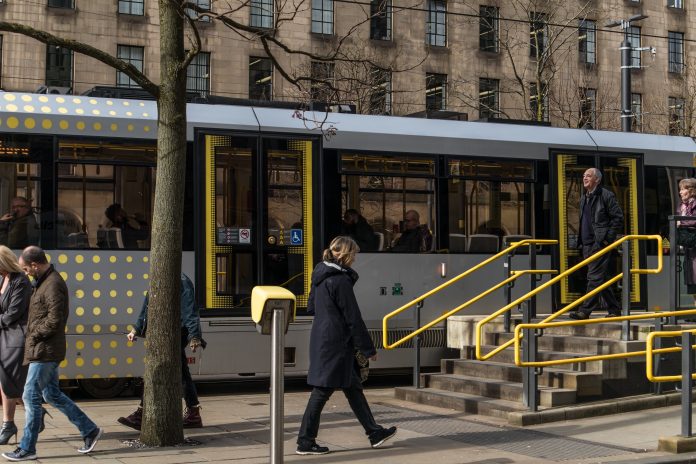Mark Page, Cradlepoint, discusses how the public transport industry could change via the use of enterprise-grade wireless connectivity
As a result of the COVID-19 pandemic, improving connectivity on public transport has moved from an objective to a strategic imperative. Dealing with disruption, social distancing, and getting essential workers safely from A to B are all new imperatives to which public transport operators have turned to technology in order to meet.
In Israel, for example, real-time traffic management systems were integrated into a Mobility-as-a-Service model to produce an on-demand transit routing algorithm that calculated the most efficient journey for each passenger and routed buses accordingly. While the system was implemented to deal with the current crisis, it could be here to stay and according to officials, may save the public $25 million a year.
The innovations in public transport we’re seeing are a direct result of the greater data capacity and high-speed connectivity afforded by 4G LTE. But fast connectivity and high bandwidth alone do not necessarily guarantee that networks will be inherently reliable. This is especially true for large-scale mass transit systems, where complexity and interoperability (i.e. with urban planning/smart city technology) must be considered. As a result, public transport operators are faced with a number of specific connectivity challenges.
Challenge 1 – Bandwidth
The bandwidth requirements of on-board technology vary from device to device – now-essential capacity sensors (which check passenger numbers are within social distancing limits), for example, will transfer much smaller data packets than streaming video from on-board surveillance cameras. Diversity in the requirements of individual devices is one thing, but the biggest challenge here is establishing and maintaining connectivity with each and every one across a fleet of potentially thousands of vehicles.
To overcome issues of bandwidth, public transport operators must first ensure that in-vehicle routers are up to the task. Enterprise-grade wireless routers running on Gigabit-Class LTE are ideal for maximising bandwidth due to two core characteristics. For one, these routers will contain operator-agnostic dual modems which connect to two network carriers simultaneously.
Secondly, in-vehicle routers must also be able to handle the bandwidth requirements of a vast array of devices simultaneously, especially when it comes to the increasing popularity of on-board passenger WiFi. With the dual-band, dual-concurrent capabilities of Wi-Fi 5, routers can support up to 100 clients simultaneously by splitting traffic across 2.4 Ghz and 5 Ghz channels.
Challenge 2 – Consistency
Frequent connection drop-offs make real-time data impossible, which can spell disaster for applications such as GPS data for Automatic Vehicle Location (AVL) systems and passenger apps, streamed video surveillance footage, and Traffic Signal Priority (TSP) systems. In vehicles, where a router is almost always moving, that signal is ever-changing and potentially dropping out of coverage range. Those dropouts or “dead spots” can become very problematic if mission-critical applications begin suffering interruptions.
To identify areas of both challenging and excellent connectivity, public transport operators can use intelligent network management platforms to determine cellular health. These platforms combine GPS data with information relating to signal strength and carrier availability to identify problem areas and respond by changing routes or working with their carrier to develop improvements.
Challenge 3 – Management and security
With many vehicles not only constantly on the move, but also spread across wide geographies, it’s simply not feasible for IT and fleet management to always visit vehicles in-person to manage connection problems, configuration changes, security updates, and other issues.
The solution lies in using the power of the cloud to remotely manage wireless edge networks, effectively granting public transport operators full visibility over the entire network. Moreover, with a single-pane-of-glass overview of every device in every vehicle, IT staff can make changes to entire fleets simultaneously, all at the touch of a button.
The future of the public transport industry?
The COVID-19 pandemic is a watershed moment in technology, with social distancing, contact tracing and environment-monitoring systems just some of the elements that will accelerate the development of smart cities. Executing upon these aspirations requires ubiquitous, enterprise-grade wireless WAN connectivity, making it imperative for public transport industry operators today to consider how to reach the next step in transport technologies carefully.
Amongst its many features, the high-capacity and ultra-low latency of 5G will play a critical role in enabling this vision of the future. Whether organisations are ready or not, 5G is coming. IoT system integrators in the public transportation sector therefore have a tremendous opportunity today to get on the pathway to 5G and get fully prepared for the massive changes it will bring. Operators running enterprise-grade wireless WAN networks with open, interoperable and convergent capabilities that combine front-, intermediate-haul and backhaul are already well on their way – are you?











